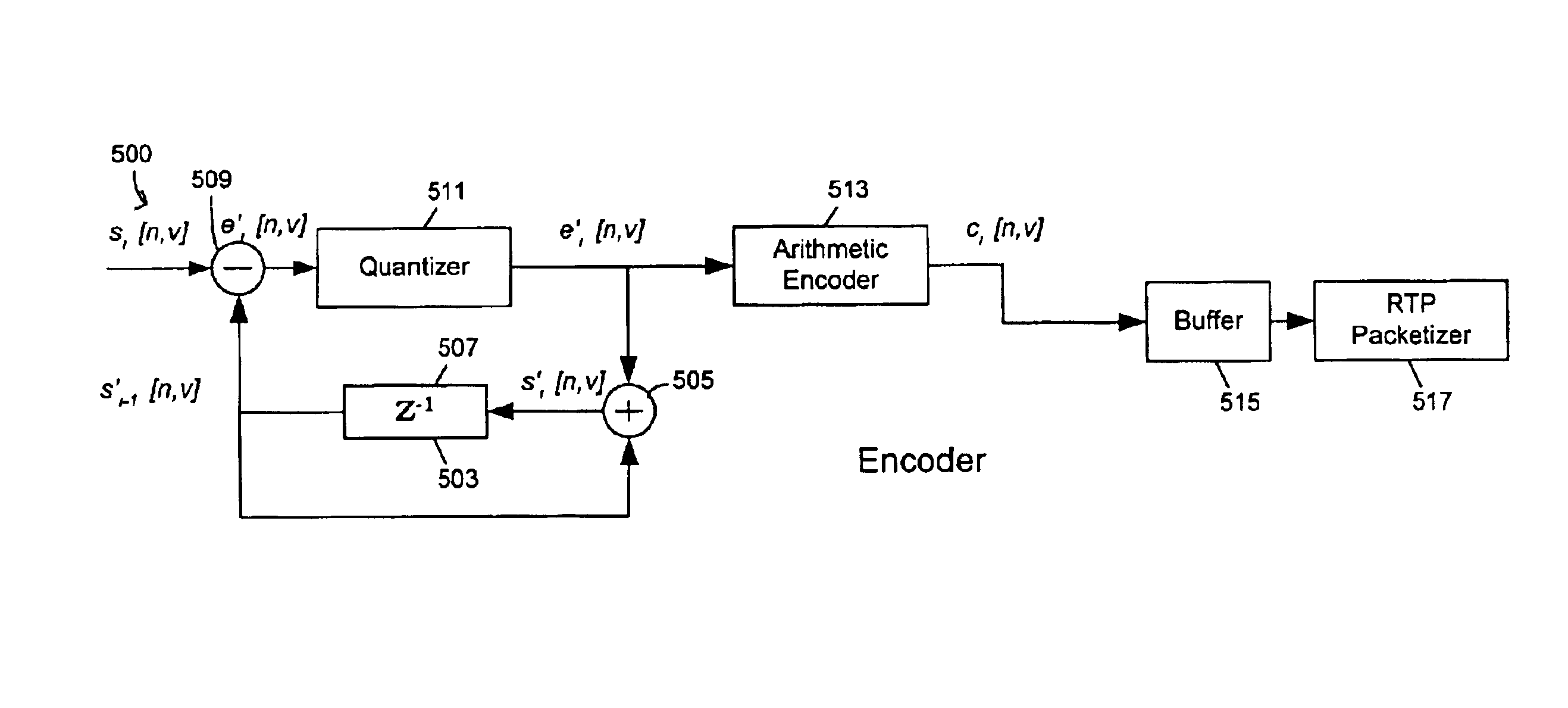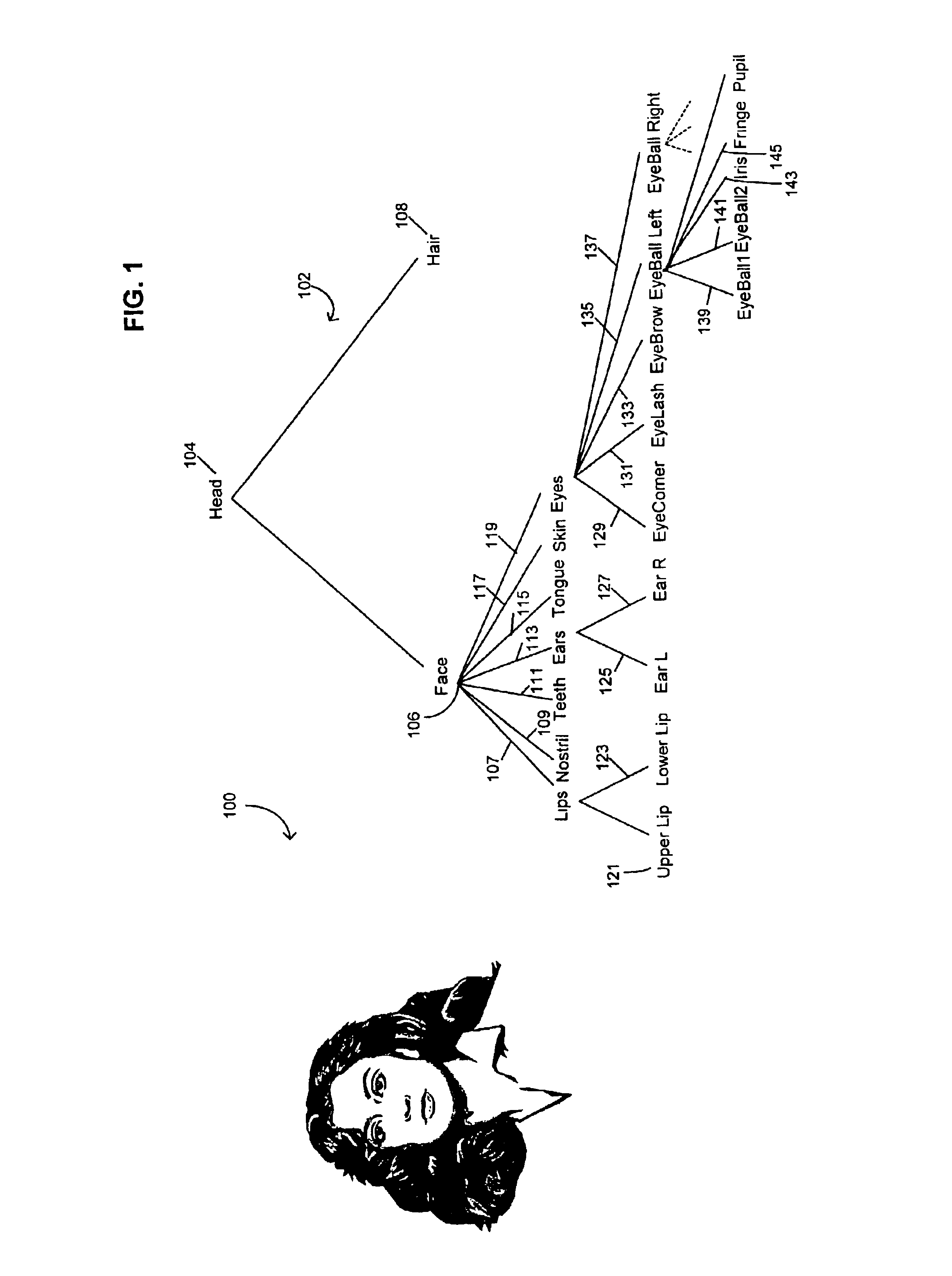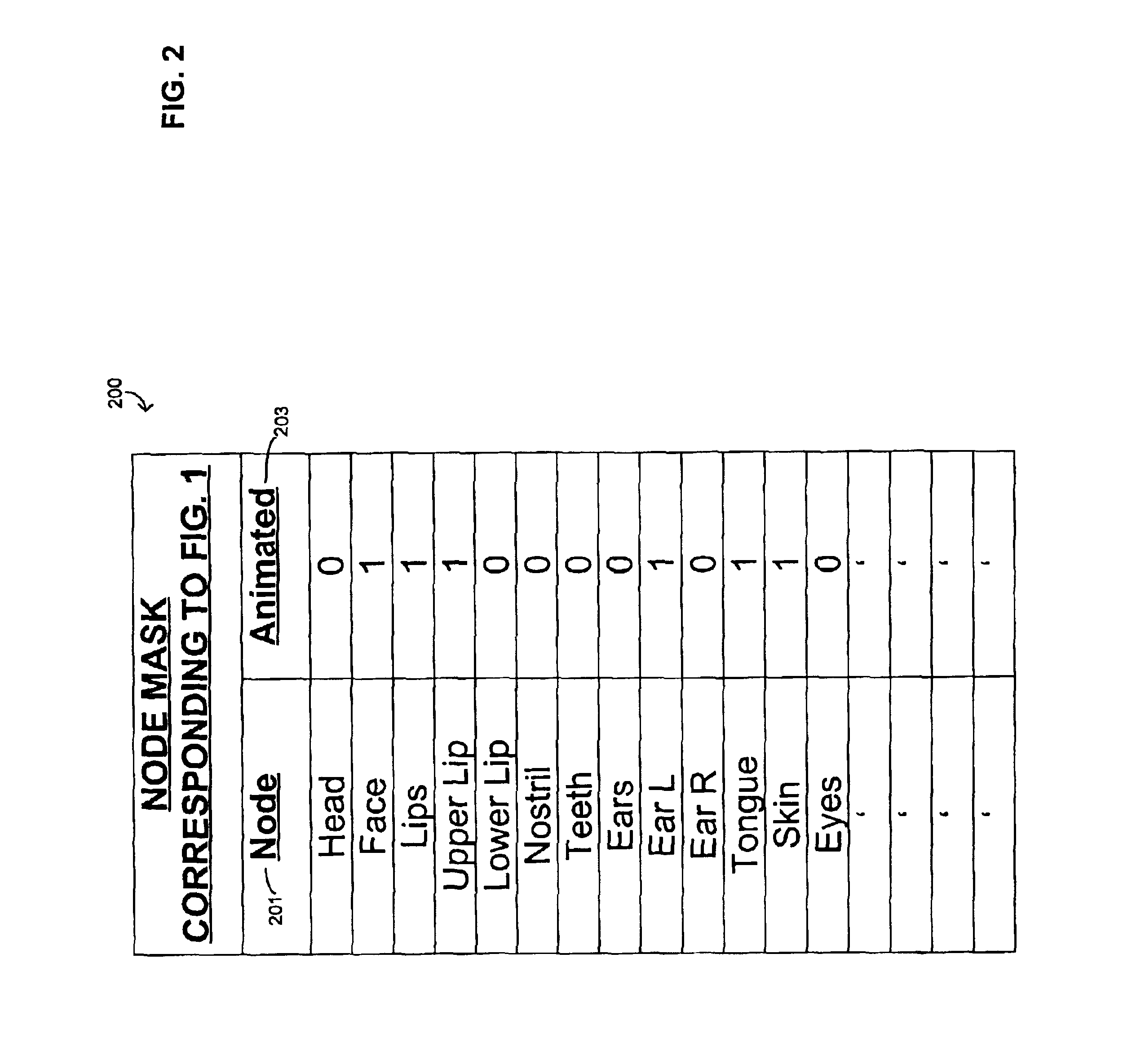Coding of animated 3-D wireframe models for internet streaming applications: methods, systems and program products
a technology of internet streaming application and wireframe model, applied in the field of computer animation, methods, system and program products, can solve the problems of not being able to predict loss, and no prior art discloses or suggests a coding scheme for 3-d wireframe models
- Summary
- Abstract
- Description
- Claims
- Application Information
AI Technical Summary
Benefits of technology
Problems solved by technology
Method used
Image
Examples
Embodiment Construction
[0029]An overview of the computer animation process to wire frame models is believed to be appropriate for better understanding of the present invention. An example of a 3-D wire frame model is disclosed in U.S. Pat. No. 6,304,264 B1, issued Oct. 16, 2001 and assigned to the same assignee as that of the present invention. Briefly, the 3-D wireframe model includes a plurality of nodes linked to other nodes by vertices in a Cartesian coordinate system. The movement of the wireframe model can be reflected in terms of changes in the positions of the vertices of the wireframe model.
[0030]The animation process begins with the server sending a receiver a wire frame model named reference model stored in the server. Alternatively, the reference model could be resident to the receiver. Displacement vectors (Changes to the vertex positions of the server wire frame model) are transmitted to the receiver wire frame model in “I” and “P” frames. An I frame represents the change of the wireframe no...
PUM
 Login to View More
Login to View More Abstract
Description
Claims
Application Information
 Login to View More
Login to View More - R&D
- Intellectual Property
- Life Sciences
- Materials
- Tech Scout
- Unparalleled Data Quality
- Higher Quality Content
- 60% Fewer Hallucinations
Browse by: Latest US Patents, China's latest patents, Technical Efficacy Thesaurus, Application Domain, Technology Topic, Popular Technical Reports.
© 2025 PatSnap. All rights reserved.Legal|Privacy policy|Modern Slavery Act Transparency Statement|Sitemap|About US| Contact US: help@patsnap.com



